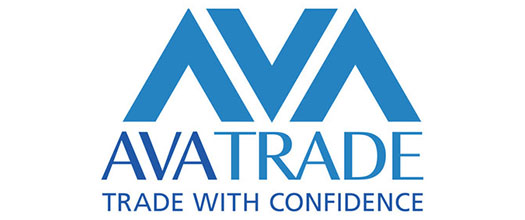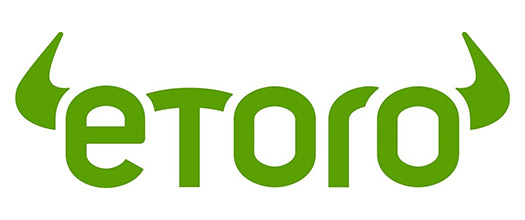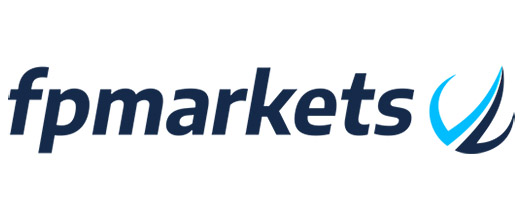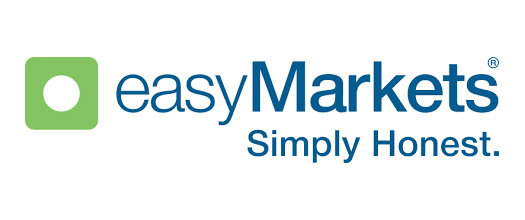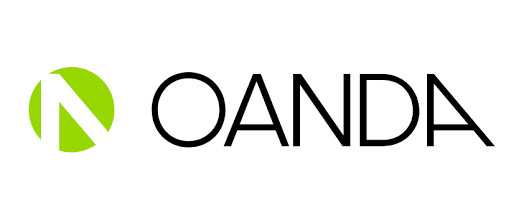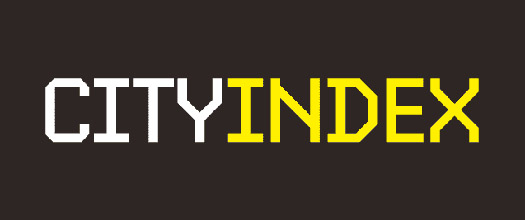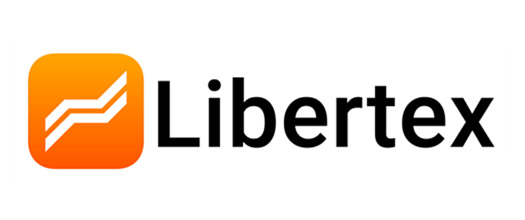If you want to be a successful online trader, then you have to understand the global markets and know the basics of trading. One of the first things every beginner needs to learn about is leverage – what this is and how it can be used to maximize profits. Furthermore, Forex brokers offer leverage ranging from 1:5 to 1:1000 or even more sometimes and traders need to decide what leverage is suitable for them.
Leverage is an extremely important part of every successful trading strategy. In Forex, investors apply it to increase the potential profits from fluctuations in exchange rates between any two currencies. It represents something like a loan, a line of credit brokers extend to their clients for trading on the foreign exchange market. If brokers offer 1:500 leverage, this means that for every $1 of their capital, traders receive $500 to trade with. Fusion Markets is a high-quality trading platform aimed primarily at the Australian market. It offers a wide range of financial products through the popular MetaTrader 4 and MetaTrader5 platforms. They include more than 90 currency pairs that come with tight spreads, leverage of up to 1:500, and no dealing desk execution. We can safely say that Fusion Markets ranks amongst the most cost-effective trading brokers nowadays as it implies no minimum account size and has waived its deposit fees. AvaTrade is an award-winning forex trading broker with a global footprint. Licensed by ASIC, the Central Bank of Ireland, and several other reputable authorities, the brand allows its users to trade Forex pairs, indices, stocks, commodities, cryptocurrencies, and FXOptions. Online traders can make deposits via credit cards, bank transfers, e-wallets, and online banking services. AvaTrade’s extensive educational content, which is available to all clients, is a standout feature together with the professional and cooperative customer support team. Operating in more than 140 countries around the globe, eToro is undoubtedly one of the most popular Forex broker in today’s online trading environment. It is distinguished by a proprietary user-friendly platform with lots of advantageous features and one of the first copy trading segments in the industry. Deposits to the trader’s account balance are free of charge regardless of the payment method chosen while there is a $5 fixed fee on all withdrawals. The lowest amount you are allowed to cash out is $30. If you are in search of a multi-language trading platform with strong licensing, XM Group appears to be the best option. Whether you prefer trading by a PC or a smartphone, this online broker has got you covered as it operates both a desktop version and dedicated mobile apps that can be downloaded from AppStore and Google Play. The summary of XM’s offering is 6 asset classes, 13 trading platforms, and 1,000 + instruments. The latter include Forex, Stocks, Commodities, Equity Indices, Shares, etc. Pepperstone is a highly-rated online Forex trading broker that applies strict security measures and offers a selection of user-friendly platforms. The financial terms of the platform are quite favorable – the average spread for Razor accounts is between 0.17 and 0.59 while the leverage is up to 1:500 for professional clients and 1:30 for retail traders. On-the-go trading is enabled via an in-browser application and dedicated mobile apps for the users of Android and iOS devices. FP Markets is a well-regulated trading platform that spreads its operations across several financial products including Forex. Lots of traders are attracted by spreads starting at 0.0 pips and leverage reaching 1:500. The clients of FP Markets have an opportunity to set up a Standard or Raw account, each coming with its own perks such as zero commission or markedly low spreads. The brokerage has included a Copy Trading functionality in its portfolio, thus being an appropriate platform for both experienced and novice traders. Established more than 15 years ago as an Australian trading platform, Axi has steadily grown and today is a well-known international brand. Its operations are regulated by two of the most reputable authority bodies – the FCA and ASIC. Traders looking for low-cost trading conditions will be pleased since the online broker offers a set of zero-commission options as well as no minimum deposit requirement and hardly any transaction fees. Forex pairs are more than 70, distributed in the Major, Minor, and Exotics categories. FBS is a respected online trading broker which serves millions of users residing in different parts of the world. The brand is a proud holder of multiple reputable awards, one of which is Most Progressive Forex Broker Europe by the International Business Magazine. Traders have the opportunity to open three kinds of accounts – Standard, Cent, and Crypto, each having a real and demo mode. Spread starts from 1 pip while the leverage is up to 1:30 for retail clients and 1:500 for professional users. Licensed by CySEC, ASIC, FSA, and FSC and having over 20 years of experience, easyMarkets is a brokerage that deserves your trust. The brand’s innovative platform allows traders to easily operate with Forex, shares, cryptocurrencies, metals, commodities, and stock indices. Pricing information is clearly presented so traders can quickly judge whether the conditions suit them. Features like Freeze Rate and dealCancelation add flexibility to the trading process. EasyMarkets offers fixed spreads thus allowing its clients to plan their activity more easily. Oanda is a global Forex broker that accepts traders from the United States, Australia, the United Kingdom, Japan, and many other countries. Those who decide to join the brokerage are free to choose between its proprietary platform and a few third-party alternatives like MetaTrader 4 and TradingView. On-the-go trading is enabled via an in-browser application and dedicated apps for iOS and Android devices. To open or maintain an OANDA account, no minimum deposit or balance is required. Plus500 is a well-regulated online trading brand that is highly valued for its 24/7 multi-language customer support and diverse portfolio. The in-house platform is available both in desktop and mobile variations, i.e. traders are in no way limited to where and when to execute the respective operations. Plus500 is particularly suitable for users who lack extensive experience as it provides a Trading Academy section with plenty of useful educational tools. Online traders who prefer operating via global brokerage companies should take City Index into consideration. A safe trading environment is ensured by licenses issued by the FCA, ASIC, and MAS while the availability of MT4, WebTrader, and iOS and Android mobile apps contributes to the maximum convenience of users. The minimum amount you can fund your account with is $100. The good thing is that both deposits and withdrawals are free of transaction fees regardless of the payment method. Libertex is an online trading broker characterized by its competitive pricing policy and the provision of both proprietary and third-party platforms. The brand’s portfolio comprises the following products: Forex, stocks, cryptos, metals, indices, etc. Libertex helps its clients to make informed decisions by publishing analytical researches and different market reviews. Credit and debit cards, bank transfers, e-wallets, vouchers, and online banking services are among the payment methods supported by the brokerage. Mobile trading is gaining an increasing number of users and those brands that have the ambition to be industry leaders launch innovative platforms which can flawlessly run on any modern device. Markets.com is exactly such a brokerage company. It is known for the innovative services it offers accompanied by strong licensing and professional customer support. Traders can benefit from a commission-free pricing environment and a wide range of trading tools. The brand’s main website is available in eight languages and has Global, EU, UK, AU, and ZA variations. NSBroker is a reliable Forex and CFD brokerage brand holding a license from the Malta Financial Services Authority (No. IS/56519). Currency pairs, precious metals, indices, energy carriers, and cryptos can be traded via the MetaTrader 5 platform which is available in desktop, web, and mobile formats. The low spreads are the most noticeable feature of NSBroker. In terms of Forex, the values are floating with a starting point at 0.3 pips and a commission of $8 per lot. The first thing they need to do is to open an account with a trustworthy brokerage firm and then choose the level of leverage they want to use. Retail traders should always keep in mind that with higher leverage, higher wins/losses will be generated. This is why they need to carefully adjust their strategy and apply some risk management techniques. Trading with 1:500 leverage is recommended only for those who have some experience in the foreign exchange market. Novices should be warned that if they try to apply it, they are likely to lose their entire account balance – probably in a matter of seconds. Financial leverage could be used by firms, banks, and individuals and although the specifics may differ significantly, the basics are pretty much the same. Investment funds, for instance, may leverage their assets by funding a portion of their portfolios with fresh capital resulting from the sale of other assets. Businesses may also leverage their investments by borrowing funds so they can use less equity (their own capital). Another example is purchasing a home and financing a portion of the price with mortgage debt. Let’s assume for instance that we buy a property for $100,000 with the intention to sell it for double the purchase price. We use 50% equity and 50% debt and within a few months, we manage to sell our asset for $200,000. We will repay the bank only the nominal value of the debt plus some interest, of course, which will leave us with around $150,000 (before the borrowing costs). This means that we have managed to leverage our initial capital and have increased our wealth by 200%. But how exactly does leverage work in Forex trading? It is shown as multiple of the trader’s equity – it could be 10, 50, or 200 times the client’s own funds. Most brokers display it as the ratio of the trader’s money to the funds borrowed from the firm or vice versa – 500:1 or 1:500. These two refer to the same thing – the broker allows the trader to open a position worth 500 times his capital. If we deposit $1,000, for instance, and use 1:500 leverage, we will be able to trade volumes at a value of $500,000. However, there are several additional things Forex traders should be aware of when using leverage. One of them is the margin requirement set by the broker. The initial margin requirement is usually displayed as a percentage of the total transaction value and it could be 0.5%, 1%, 2%, etc. There are various formulas for margin and leverage that could clearly show how these two fundamental concepts are linked. For instance, we can calculate the margin by dividing the value of the transaction by the leverage. If we use the same example from above and have $1,000 as balance in our account, the broker offers us quite high leverage of 1:500 (or 500:1 more precisely). We want to buy 1 standard lot of the EUR/USD pair on a USD-denominated account. To get the margin for this specific position, we need the value of the transaction, which is €100,000, and the leverage, which is 500 (500:1). When we divide €100,000 by 500, we get €200, which is 0.2% of the transaction value. This means that while our position is open, our balance may remain $1,000 but our equity will be less – €200×1.10 (the EUR/USD exchange rate)= $219,52. This is the margin that needs to remain “locked” as collateral so our equity will be $780.48. We are holding a long position on 1 standard EUR/USD lot (€100,000), which we have purchased at a rate of $1.10. Usually, the price for this major currency pair does not move by more than 100 pips per day (1 pip is one-hundredth of one percent or in this case, the fourth decimal place in the bid-ask price). Let’s say the Euro increases in value relative to the US dollar and the movement is only 45 pips. This means that when we sell and close the position, €1 will be equal to $1.1045. This does not sound like a lot – it is a movement of only a fraction of a cent. However, our profit will be €100,000 x (1.1045 – 1.10) or $450. Note that we have kept this position open only for a few hours and the price movement was very slight. With a minimum required margin of only $219,52, we have made a profit of $450. In other words, we have doubled our equity. The high risk of excessive leverage also means that traders should be skilled and have sufficient experience in the foreign exchange market before taking 1:500 leverage. Another thing they should consider is the strategy they are about to apply and their overall trading style. More importantly, it is essential to determine all conditions of the trade before opening a position and this involves its duration. Usually, traders who open and close positions within a few hours would prefer using higher leverage – 1:100 and higher. This way they can squeeze the highest possible profits out of short-term transactions. Such high leverage – around 1:500, is particularly popular among so-called scalpers. Scalping is quite an interesting strategy in Forex trading where positions are kept open only for a few minutes or even seconds. Of course, traders should know that although leverage works as borrowed capital, i.e. as a line of credit as some would say, it has no additional cost. Traders do not have to pay interest on the leverage they get. There is no need to repay any debt or pay for anything else – the only cost for the transaction will be clearly displayed by the broker beforehand. Last, but not least, traders should understand that in most cases, leveraged trading is the only way for them to access the foreign exchange market. Typically, transaction volumes here are within the six and seven-figure rate and only a handful of retail traders could afford to open trades with their own equity. When using leverage, however, everyone can trade against leading banks, hedge funds, and other institutional traders. To avoid losses, they should first learn how to apply leverage and determine how much leverage would be suitable to them. In addition, they should apply different risk management techniques and tools – many of these are readily available once you open a retail client account with an online Forex broker. Great risk and management tools are stop losses, for example, but to be effective, they need to be placed correctly by the trader.What Is Financial Leverage?
Before looking into leveraged trading products such as CFDs or Forex pairs, we need to better understand how leverage works and how it is applied. There are various forms of leverage that could arise in different situations but in general, it is the use of borrowed funds (rather than one’s own money) in the purchase of an asset. The idea is that the future profits of this investment will be much higher than the borrowing cost.
How Does Leverage Work in Forex?
Once we have described the basic concept of using leverage, we should be able to apply it in currency trading, as well. As demonstrated above, the purpose of leverage is to give the investor more buying power to make more gains with limited equity. The same applies to Forex trading, as well. Brokers offer their clients leverage so that they can generate higher profits with only a portion of the transaction value.
Margin
In order to provide leverage to their clients, Forex brokers require a certain amount of funds to be deposited in the trading account as collateral to cover the risk associated with taking leverage. This deposit is called margin and leveraged trading is sometimes referred to as trading on margin. Each broker has a different margin requirement, based on the type of account (standard, mini, professional, etc.), the funds deposited by the trader, and the type of financial instrument that will be traded.
Leverage and Expected Returns
The main characteristic of leverage in Forex trading is that it amplifies the expected profit or loss from each trade. This means that traders can earn a lot more from a successful transaction with leverage than they would if they invested only their own equity. If we take the 1:500 level, each $1 profit from regular, non-leveraged trading would translate to $500. To better illustrate the effect of leverage on the expected returns, let’s use the same example from above.
Is 1:500 Suitable for You?
When determining what leverage to use, traders should take several important things into consideration. First of all, they should keep in mind that 1:500 or 500:1 is an extremely high level of leverage in trading and it is not allowed in many jurisdictions due to the high risk for losing one’s capital. This includes major Forex markets such as the US, Japan, and the European Union where brokers are required to restrict the leverage offered to retail clients. In the EU, for instance, traders can get maximum leverage of 1:30 for major currency pairs.
Advantages of 1:500 Leverage
Until a few years ago, the Forex market became extremely popular among retail traders and one of the reasons for this was the opportunity to get high leverage and make the most of your limited capital. Nowadays, you would not find many brokers offering 1:500 leverage due to regulatory changes aiming at creating a more secure and sustainable trading environment. Although such high levels of leverage may seem too extreme to some traders, they do provide us with the chance to increase our potential profits by multiple times – by 500 times compared to any profits we could generate without leverage, to be precise.
Risks of Using 1:500 Leverage
Leveraged trading is always linked with great opportunities for profits and high risks. While leverage is used with the purpose to magnify the profit from a trade, it may also magnify the negative outcomes from unsuccessful trading – i.e. the financial losses. This is one of the most underestimated dangers to beginner traders – they would get 1:500 leverage tempted by the attractive promise for huge profits but without a solid, reliable strategy and good knowledge of the market, they risk losing all their capital within days or even hours.

